Diseases and pests of bird cherry
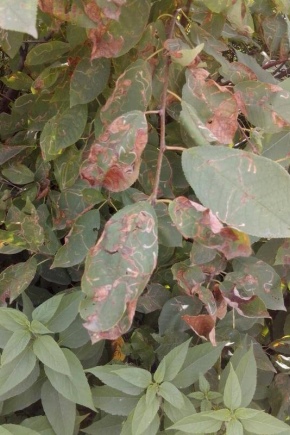
Bird cherry is a hardy tree. It is easy to care for, resistant to low temperatures and can grow in almost any conditions. But this tree is sometimes affected by various diseases and pests. To cope with them, you need to know well their signs and how to treat the tree.

Diseases and their treatment
There are several main diseases that affect bird cherry.
Flower and fruit pockets
This is the most common disease faced by everyone who grows bird cherry on their site. It is not difficult to recognize it. When a tree is infected with disease, its fruits become deformed and brown. A dense layer of plaque forms on their surface, resembling wax to the touch. Over time, the tree weakens and begins to look very sick.
Such a disease develops in the summer, when there is high humidity outside. In order to protect the tree, it must be treated several times with agents containing copper before flowering.
Noticing mutated pods on it, they must be torn off immediately.
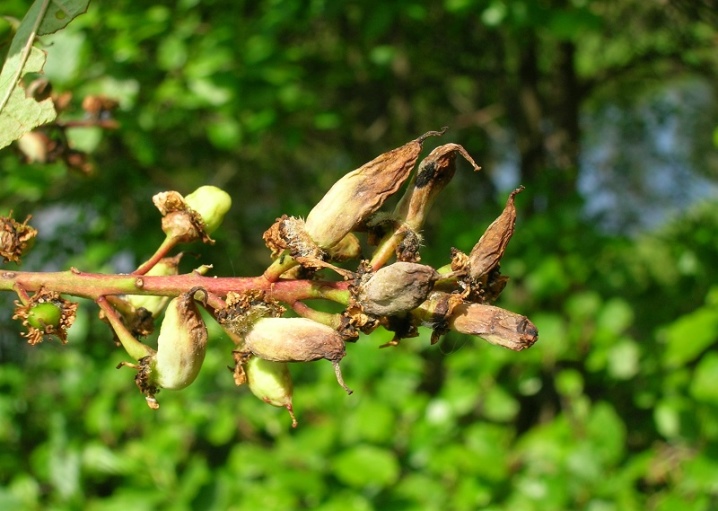
Powdery mildew
This disease is also quite common. It is very simple to notice that the plant is infected, because in this case a white bloom appears on its trunk and leaves, similar to a dense web. In some cases, small black dots can be seen on different parts of the tree.
To combat this disease, the tree must be regularly treated by any means against powdery mildew.
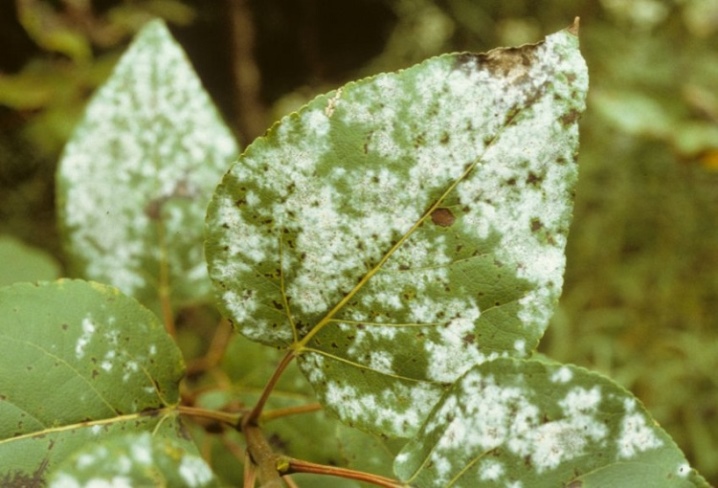
Red spot
This fungal disease manifests itself very clearly. In the first days after infection, large red spots begin to appear on the leaves of the plant. By the fall, they become darker. Over time, the tree weakens. Leaves fall ahead of time, fruits are not tied.
To combat this disease, both the tree itself and the ground next to it in the spring are treated with a solution of copper sulfate.
If the disease struck the bird cherry after the end of the flowering period, use a one percent solution of the Bordeaux mixture.
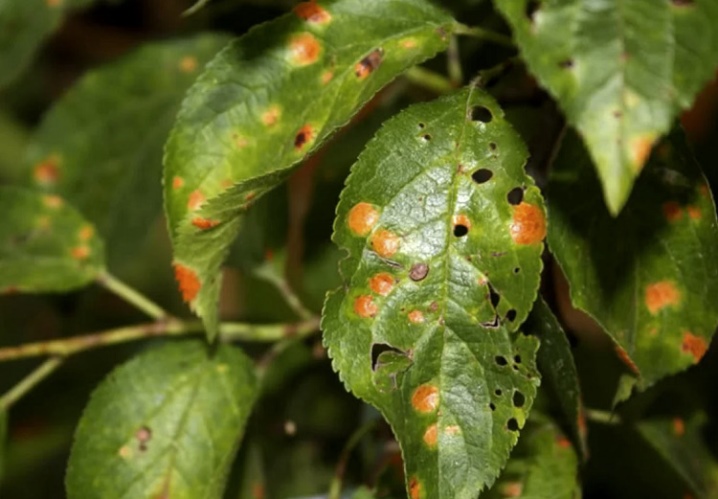
Cercosporosis
This is another fungal disease. The main sign of its appearance is a change in the color of the foliage. From above it becomes pale, and from below it becomes red-brown. When a disease affects a plant, the foliage falls off of it, and it dries up by itself. Both common bird cherry and Virginia are subject to this disease.
Cercosporosis develops well in the warm season in conditions of high humidity. To save an infected plant, the leaves with spots must be removed from it, and the crown must be sprayed with any fungicide.
It is necessary to treat the plant in several approaches.
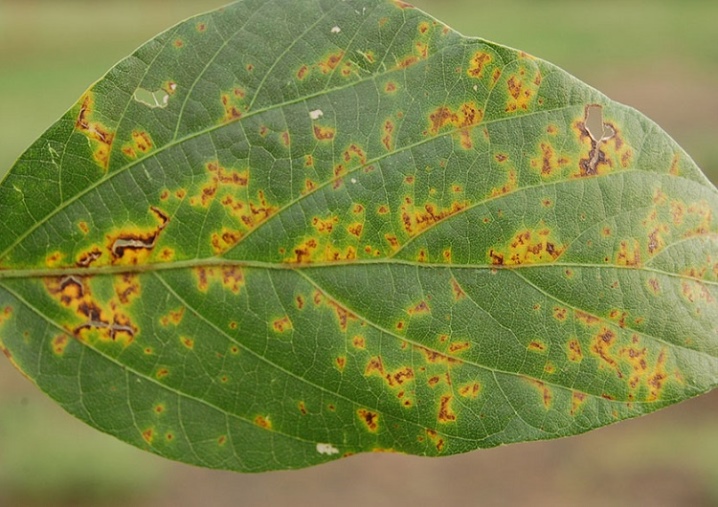
Rust
This fungal disease primarily causes leaf death. If the tree is weak, and the scale of infection is large, this will lead to a decrease in its winter hardiness.
Any approved fungicide can be used to combat this disease.
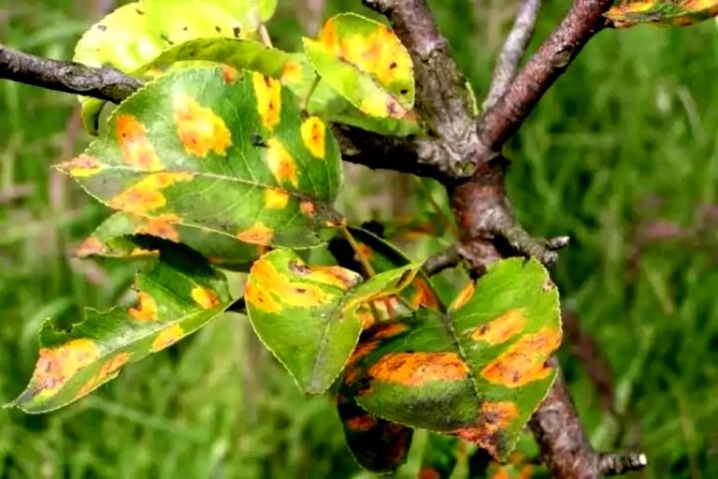
Coniothyroidism
This disease affects not only foliage, but also branches, as well as fruits. On the affected areas, yellow or brown necrosis appears. For to get rid of this disease, the plant must be treated with a quality fungicide.
If possible, most of the infected branches should be cut and destroyed, since the pathogens remain in plant debris.
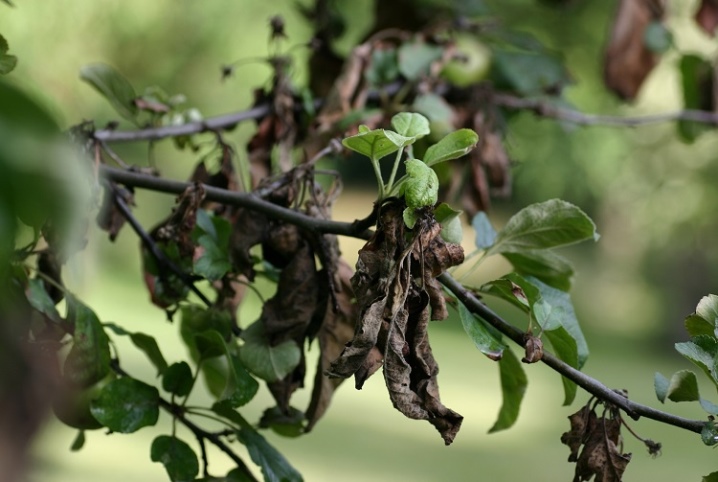
Rot
Most often, bird cherry is affected by white tree rot.Its development leads to rapid aging and death of the plant. Having noticed the appearance of signs of the disease, the infected branches must be removed. If this is not done, the disease will spread further very quickly.
Places of cuts should be covered with a layer of clay mixed with fungicide.
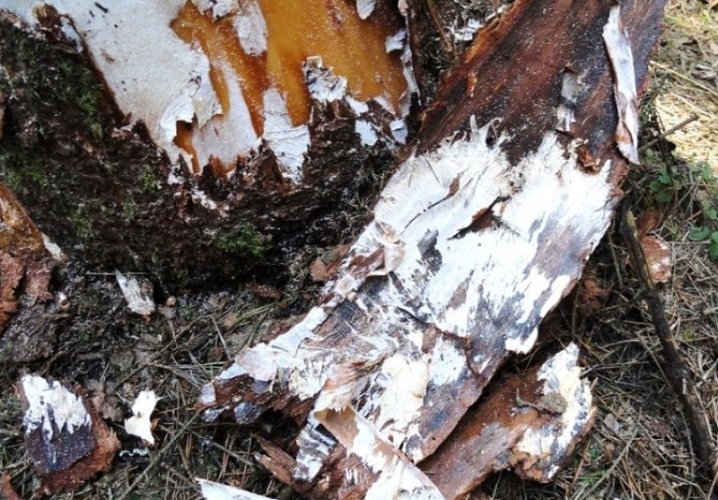
Cytosporosis
This disease damages the trunk and branches of the tree, accelerating the process of drying out. Small white bumps appear on the infected parts of the plant. Having noticed them, you should immediately start treatment. Infected branches must be cut off immediately and destroyed along with foliage and fruits.
If the plant has previously been exposed to this disease, in the spring, as a preventive measure, it must be treated with a one percent Bordeaux mixture.
In autumn, the trunk of a bird cherry can also be whitened using ordinary lime.
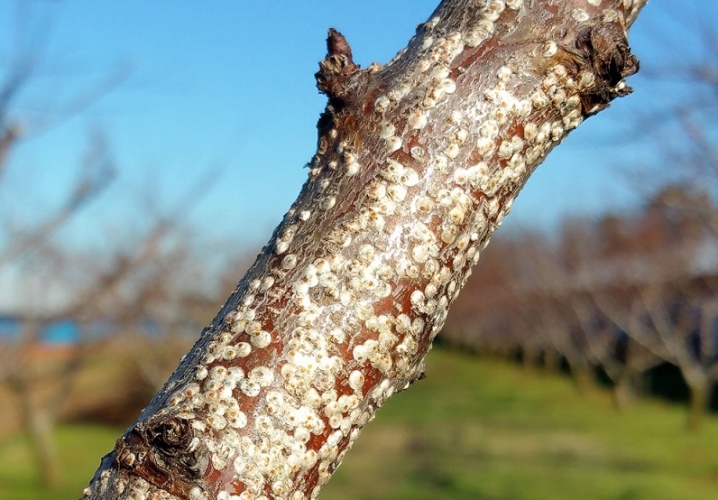
Pests and the fight against them
Various insects can also harm plants. They attack both garden trees and those that grow in the city.
Bird cherry moth
Most often, bird cherry is attacked by this insect. By its appearance, the moth resembles small silvery butterflies. Caterpillars of this insect have a green-yellow color and dark spots located all over the body.
The bird cherry moth is quite dangerous. It damages both young buds and mature leaves. When these insects begin to actively reproduce, the tree looks like it is entangled in a dense layer of cobwebs. The fastest way to get rid of this pest is by using proven chemicals, such as Inta-Vir or Fitoverm. But it is worth remembering that their treatment will be effective only in late spring or early summer.
For to get rid of such a "web" and moths, you can also use folk remedies. Concentrated solutions of makhorka, potassium permanganate or onion skins are suitable. Many gardeners recommend sprinkling bird cherry with regular Coca-Cola. The sweet drink attracts red ants, which destroy these pests very quickly.
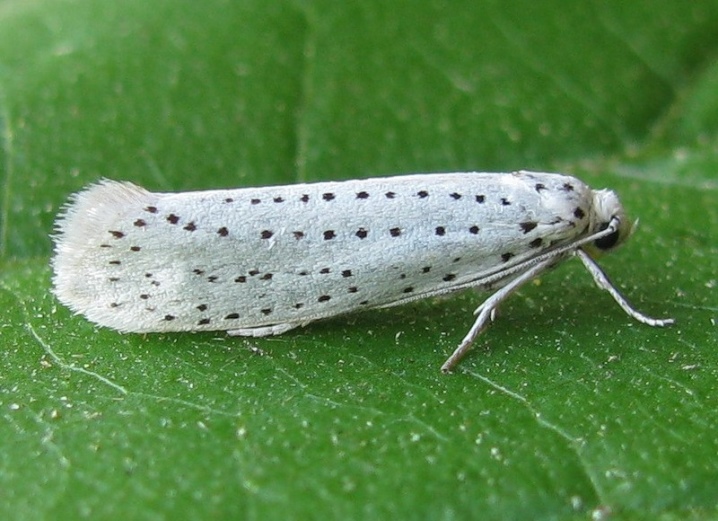
Leaf beetle
Small beetles attacking bird cherry in spring have a light yellow color and small dark spots on the wings. They attack young foliage and eat holes in it. For to get rid of these pests, the tree must be treated with drugs such as Fufanon or Kinmix.
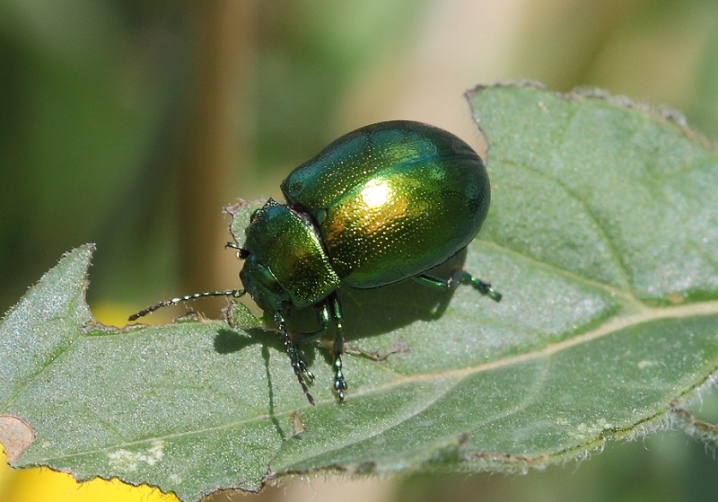
Aphid
This insect very often infects garden trees. Bird cherry is no exception. Aphids attack young shoots. You can fight it both by chemical means and by folk methods. The simplest of them is spraying the crown with a soapy solution, to which sifted wood ash was added.
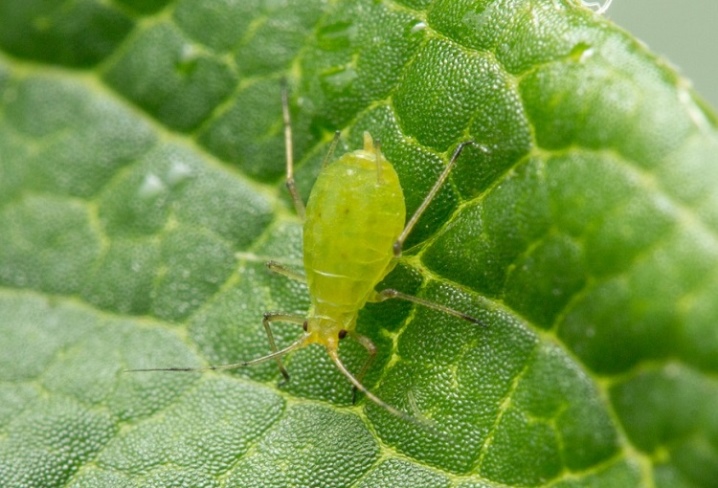
Rose leafhopper
This is not a very common type of pest. The insect has a light, narrow body about 3 mm in length. It feeds on the sap of bird cherry leaves, thus harming the young tree. As a result of the defeat, the foliage changes color and becomes marbled. To get rid of these insects, the plant must be thoroughly sprayed with Fitoverm or other means with the same effect.
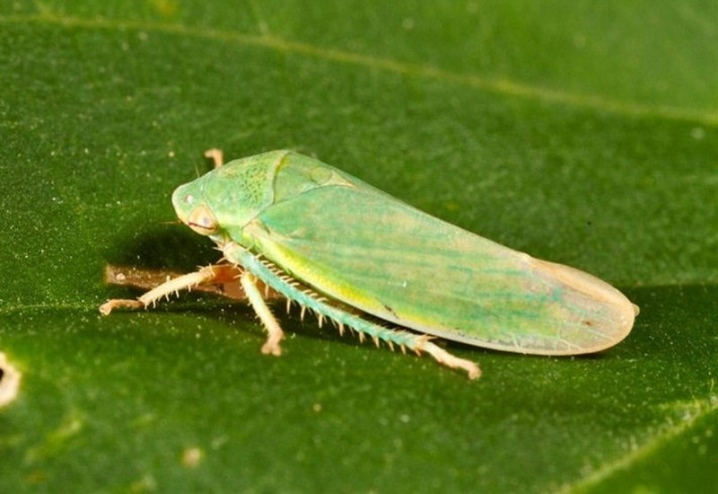
Prevention measures
In order for the plant not to be exposed to diseases and attacks of pests, it needs to be provided with proper care.
- The tree needs to be fed regularly. In the spring, it is necessary to use fertilizers rich in nitrogen, in the fall - potassium-phosphorus fertilizers.
- Bird cherry does not need frequent watering. High humidity can be one of the reasons for the development of various diseases. As a rule, the tree is watered only a few times during the summer if it is dry. If it rains regularly, it does not need additional moisture.
- The crown of the tree should be inspected regularly and pruned twice a year to remove any weakened branches. Places of cuts must be thoroughly lubricated with garden varnish.
If done correctly, the tree will remain healthy and strong.
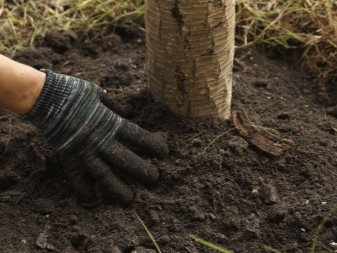














The comment was sent successfully.